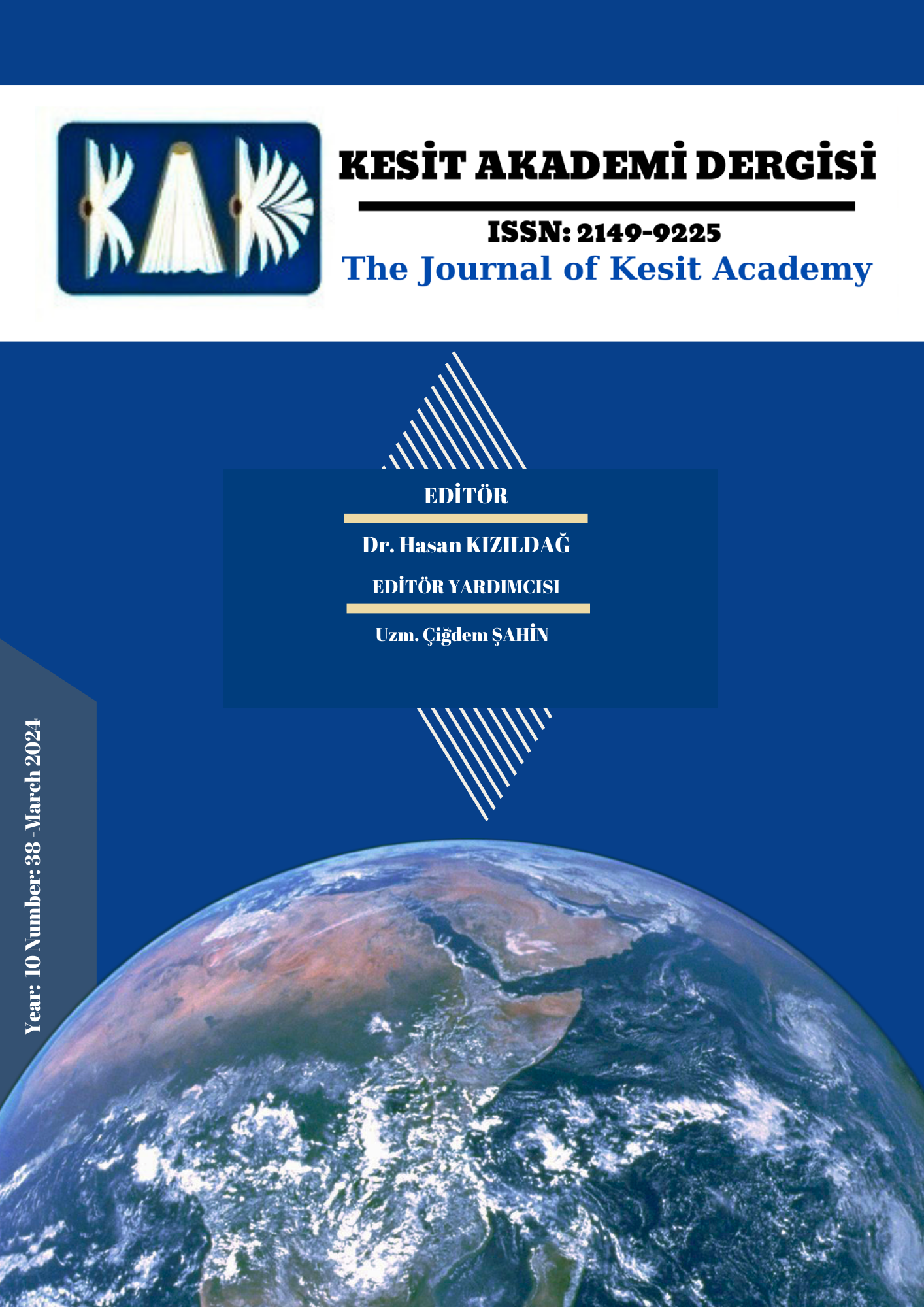Author :
Abstract
Geceleri ışığıyla dünyayı aydınlatan yıldızlar en eski çağlardan itibaren ilahi bir varlık, dünyayı ve insanları doğrudan etkileyen bir güç, koruyucu özelliklere sahip bir yol gösterici olarak düşünülmüş bu nedenle birçok kültürde, inanç sistemlerinde ve sanat eserlerinde yaygın olarak yer almıştır. Anadolu Türk mimarisinde yıldız, geometrik kompozisyonlarla bezemelerde çeşitli örneklerle tuğla, taş, çini, ahşap gibi malzemeler kullanılarak farklı tekniklerle yoğun olarak uygulanmıştır. Sembolik olarak gökyüzünün sonsuzluğu yıldız kompozisyonlarıyla bezemelere yansıtılmıştır. Ayrıca yıldız, biçim olarak hat sanatıyla da birleştirilerek kutsal isimlerin yıldız formunda yazıldığı kitabeler olarak karşımıza çıkmaktadır. Hat sanatında geometrik esaslara bağlı kalınarak kûfi hattı ile yazılan bu kitabeler kompozisyon özellikleri bakımından ilginç örneklerdir. Bu kitabelerde yıldız bir form olarak yazının sınırını oluşturmaz. Yıldızın kolları bir satır olarak değerlendirilip yazılan ibare bütünde yıldızı oluşturur. Mimari eserler üzerinde tespit edilen yıldız formlu kitabeler beş, altı, sekiz ve on köşeli yıldızlarla oluşturulmuştur. Bu makalede 13. ve 14. yüzyıl Anadolu Türk mimarisinde tespit edilen yıldız formlu kûfi kitabeler tarihi, yapıdaki konumu, malzemesi, yazı çeşidi, ibare, biliniyorsa hattatı vb. bilgileri verilip form ve tasarım özellikleri bakımından incelenmiştir. Ayrıca vektörel çizimleri yapılıp, renklendirilerek analiz edilmiştir. Kronolojik gelişim ve etkileşim bakımından yakın ülkelerde benzer örneklerin taraması yapılmış bulunan kitabelere de kısaca yer verilmiştir.
Keywords
Abstract
Stars, which illuminate the world at night with their light have been considered a divine being, a power that directly affects the world and people and a guide with protective properties since ancient times, therefore they have been widely used in many cultures, belief systems and works of art. In Anatolian Turkish architecture, stars were applied intensively with various techniques by using different materials such as brick, stone, tile and wood with geometric compositions. Symbolically, the infinity of the sky is reflected in the decorations with star compositions. In addition, it was combined with calligraphy as a star form and applied as inscriptions in which sacred names were written in starform. These epigraphs, written in kufic calligraphy adhering to geometric principles in calligraphy are interesting examples in terms of their compositional features. In these epigraphs, the star as a form does not constitute the border of the text. The arms of the star are considered as a line and the written phrase constitutes the star as a whole. The star-formed epigraphs found on architectural works were created with five, six, eight and ten-pointed stars. In this article, the history of the star-formed cufic inscriptions found in 13. and 14. century Anatolian Turkish architecture were examined in terms of their design features stating their history, location in the structure, material, type of writing, phrase, calligrapher if known, etc. In addition, vectorial drawings were made and analyzed by coloring. Similar samples were searched in neighboring countries in terms of chronological development and interaction and the inscriptions found were briefly included.
